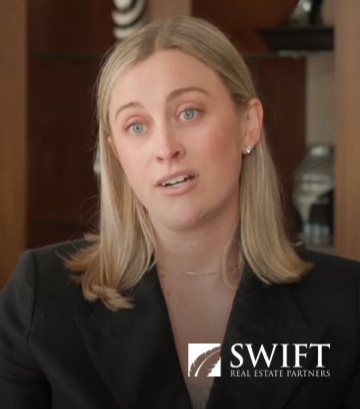NEW YORK – September 6, 2022 – VTS, the commercial real estate industry’s leading technology platform that transforms how strategic decisions are made and executed across the asset lifecycle, today announced a Series E funding round totaling over $125 million. The funding round is led by existing VTS customer and investor CBRE Group, Inc. (NYSE:CBRE), the world’s largest commercial real estate services and investment firm, which is providing $100 million of capital and will join VTS’ Board of Directors. Other investors include BentallGreenOak, AmTrust, Brookfield Ventures, and Insight Venture Partners, among others.
In addition to its capital investment, CBRE will partner with VTS to roll out the VTS Platform, with unique enhancements and integrations, as the technology platform of choice for its agency leasing and property management teams starting in the U.S. This partnership deepens the existing relationship between VTS and CBRE and underscores CBRE’s commitment to giving its brokers and property managers a competitive advantage through innovative technology.
“Over the past two years, VTS has undergone a transformative evolution, shifting from a single-product company to a multi-product platform that serves every player in the ecosystem—from landlord to broker to tenant. This infusion of capital lets us double down there, allowing our customers to offer a completely tailored property experience to their tenants across their entire portfolios,” said Nick Romito, CEO of VTS. “We look forward to expanding upon our long-standing relationship with CBRE, which shares this same vision in providing their people and customer base with technology that delivers a modern, portfolio-driven experience across all asset types.”
“VTS is one of the most highly successful Proptech companies in the history of our sector. Their proprietary technology has redefined how industry professionals lease and manage space,” said Bob Sulentic, CBRE’s President and Chief Executive Officer. “Our investment in VTS is consistent with our strategy of partnering with exceptional companies that bring powerful resources to our clients and our people. We look forward to helping VTS accelerate their growth and to working with them to create a differentiated technology platform for our brokers, building owners, and tenants.”
The VTS Platform is now used by 19 of the 20 largest global asset managers, and over 300,000 tenant companies are managed throughout the platform, making it the most widely-utilized software in commercial real estate. In 2021, the VTS Platform executed over $31 billion of leases, with over 2 billion square feet of assets added. VTS captures the largest first-party data set in the industry, delivering real-time insights that fuel faster, more informed decision making and connections throughout the deal and asset lifecycle. Today, more than 87,000 office, retail, industrial, and multi-family properties are managed on VTS across 40+ countries.
“This funding comes at one of the most pivotal times in commercial real estate history,” said Ryan Masiello, Chief Strategy Officer of VTS. “As the industry races to modernize the office experience, integrating property management and leasing has never been more important and our partnership with CBRE is an example of that coming to life in a material way.”
"Having $80 billion of assets under management, we understand the importance of technology and software for the real estate industry. VTS’ platform and market position to improve leasing and property management in our industry is one of the many reasons we participated in the latest funding round," said Sonny Kalsi Co-CEO of BentallGreenOak.
The latest funding round comes as VTS also recently secured $150 million in debt financing from Canadian-based CIBC Innovation Banking, totaling $275 million in new funding. The capital will ensure that VTS continues to accelerate its product innovations, continue to source strategic acquisitions, and attract top talent – team expansion in the U.S., U.K., and Canada is a major focus.
VTS has been certified as a Great Place to Work® two years in a row, and was recently recognized on Fortune’s Best Workplaces in New York, Fortune’s Best Workplaces in Real Estate, and Glassdoor’s Highest Rated Cloud-Computing Companies.
About VTS:
VTS is the commercial real estate industry’s leading technology platform that transforms how strategic decisions are made and executed across the asset lifecycle. In 2013, VTS revolutionized the commercial real estate industry’s leasing operations with what is now VTS Lease. Today, the VTS Platform is the largest first-party data source in the industry and delivers data insights and solutions for everyone in commercial real estate to fuel their investment and asset strategy, leasing and marketing automation, property operations, and tenant experience.
With the VTS Platform, consisting of VTS Lease, VTS Rise, VTS Data, and VTS Market, every business stakeholder in commercial real estate is given the real-time market information and executional capabilities to do their job with unparalleled speed and intelligence. VTS is the global leader with more than 60% of Class A office space in the U.S., and 12 billion square feet of office, retail, and industrial space is managed through our platform globally. VTS’ user base includes over 45,000 CRE professionals and industry-leading customers such as Blackstone, Brookfield Properties, BXP, CBRE, Hines, JLL, LaSalle Investment Management, and Oxford Properties. To learn more about VTS, and to see our open roles, visit www.vts.com.
About CBRE Group, Inc.:
CBRE Group, Inc. (NYSE:CBRE), a Fortune 500 and S&P 500 company headquartered in Dallas, is the world’s largest commercial real estate services and investment firm (based on 2021 revenue). The company has more than 105,000 employees (excluding Turner & Townsend employees) serving clients in more than 100 countries. CBRE serves a diverse range of clients with an integrated suite of services, including facilities, transaction and project management; property management; investment management; appraisal and valuation; property leasing; strategic consulting; property sales; mortgage services and development services. Please visit our website at www.cbre.com.
Back To News And Press ReleasesVTS Resources
Customer Success Stories
Hear the most proactive, forward-thinking executives who use commercial real estate software to increase their ROI speak about their partnership with VTS.

VTS Blog
Dive into our library of industry insights, Q&As, and more.